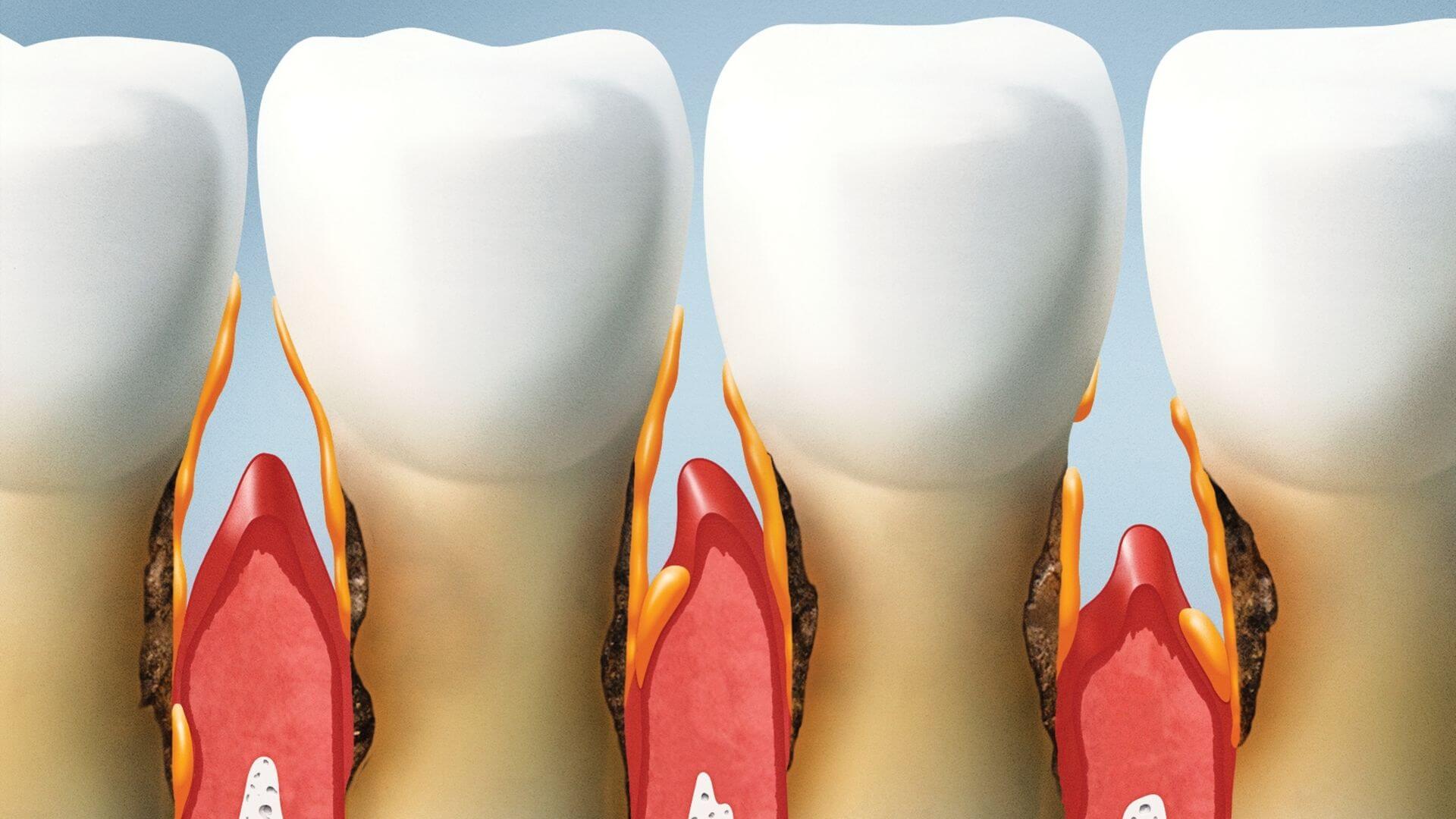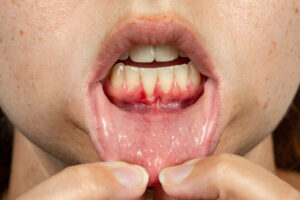How to shrink gum pockets at home

Gum pockets, also known as periodontal pockets, are spaces that can form around the teeth under the gum line when the gums pull away from the teeth.
These pockets can become breeding grounds for bacteria, leading to gum disease, tooth decay, and even tooth loss if left untreated.
While severe cases of gum disease require professional dental care, there are steps you can take at home to help shrink gum pockets and improve your oral health.
Table of Contents
How Do You Know You Have Gum Pockets
Gum pockets, also known as periodontal pockets, are spaces that form around the teeth under the gum line as a result of gum disease (periodontitis). These pockets can indicate the presence and severity of gum disease.
Here Are the Main Symptoms of Gum Pockets
- Bleeding gums: One of the first signs of gum disease is bleeding gums, especially during brushing or flossing. While this doesn’t confirm the presence of gum pockets, it’s an early indicator of gum disease that can lead to pocket formation.
- Swollen or tender Gums: Gums that are swollen, red, or tender can be a sign of inflammation caused by the buildup of plaque and tartar, leading to the development of gum pockets.
- Bad breath: Persistent bad breath (halitosis) or a bad taste in your mouth can be caused by the bacteria in gum pockets.
- Gum recession: If your teeth appear longer than before, it might be due to gum recession, a condition where the gum tissue pulls back from the tooth, potentially creating pockets.
- Loose teeth: As gum pockets deepen, they can affect the bone structure supporting your teeth, leading to tooth mobility or loss.
- Sensitivity: Teeth that have exposed roots due to gum recession can be particularly sensitive to hot, cold, or sweet foods and drinks.
- Visible pockets: In more advanced cases, you might actually see the pockets around the teeth or feel a gap when you touch your gums.
The most accurate way to know if you have gum pockets is through a professional dental examination. Dentists and periodontists use a special tool called a periodontal probe to measure the depth of the gum pockets around each tooth.
Healthy gums usually have pocket depths of 1 to 3 millimeters. Pockets deeper than 4 millimeters can indicate gum disease.
What Causes Gum Pockets?
Gum pockets, or periodontal pockets, are caused by the progression of gum disease, which can be broken down into two main stages: gingivitis and periodontitis.
Here’s how these conditions lead to the formation of gum pockets:
- Plaque buildup: The primary cause of gum pockets is the buildup of plaque on the teeth. Plaque is a sticky film composed of bacteria, mucus, and food debris. If not removed through regular brushing and flossing, plaque can harden into tartar (calculus), which is much more difficult to remove.
- Gingivitis: The bacteria in plaque produce toxins that irritate the gum tissue, leading to gingivitis, the earliest stage of gum disease. Symptoms of gingivitis include red, swollen, and bleeding gums. At this stage, the damage is still reversible, and the gums can heal with proper oral hygiene and professional dental care.
- Periodontitis: If gingivitis is left untreated, it can progress to periodontitis, a more severe form of gum disease. In periodontitis, the inner layer of the gum and bone pull away from the teeth, forming pockets. These pockets collect debris and can become infected. The body’s immune system fights the bacteria as the plaque spreads and grows below the gum line.
- Tissue and bone destruction: The bacteria and the body’s response to the infection start to break down the bone and connective tissue that hold teeth in place. As the disease progresses, the pockets deepen, and more gum tissue and bone are destroyed. This can lead to teeth becoming loose and may eventually result in tooth loss.
Risk Factors
Several factors can increase the risk of developing gum pockets, including poor oral hygiene, smoking, diabetes, hormonal changes (such as those occurring during pregnancy), genetic susceptibility, certain medications that reduce saliva flow, and illnesses that affect the immune system.
Aggressive Periodontitis
Some individuals may be more prone to severe gum disease due to genetic factors. Aggressive periodontitis can occur in people who are otherwise healthy and can lead to rapid progression of gum pockets and bone destruction.
Preventing gum pockets involves maintaining good oral hygiene practices, including regular brushing, flossing, and dental check-ups. Quitting smoking and managing other health conditions can also reduce the risk of developing gum disease.
If you already have gum pockets, treatment options include professional cleaning procedures like scaling and root planing, medications to control infection, and, in severe cases, surgery to restore supportive tissues.
The Consequence of Untreated Gum Pockets
Untreated gum pockets can lead to severe consequences, including progressive bone loss, tooth mobility, and eventual tooth loss due to the destruction of the supporting structures of the teeth.
As the pockets deepen, they harbor more bacteria, leading to further infection and inflammation. This chronic infection can also have systemic effects, potentially increasing the risk of heart disease, stroke, diabetes complications, and respiratory issues.
How Are Periodontal Pockets Diagnosed?
Gum pockets are diagnosed through a combination of a dental examination and specific measurements taken by a dentist or periodontist (a gum disease specialist).
Here’s how the process typically works:
- Medical and dental history: Your dentist will start by reviewing your medical and dental history, including any symptoms you’re experiencing and risk factors for gum disease.
- Visual examination: The dentist will visually examine your gums for signs of inflammation, recession, bleeding, or abnormal changes in color and texture.
- Periodontal probing: The definitive method for diagnosing periodontal pockets involves using a periodontal probe, a small, thin instrument marked with measurements in millimeters. The dentist or hygienist gently inserts the probe into the space between the gum and the tooth at several points around each tooth. Healthy gums typically have a pocket depth of 1 to 3 millimeters. Depths greater than 4 millimeters can indicate gum disease and the presence of periodontal pockets.
- X-rays: Dental X-rays may be taken to check for bone loss around the teeth. Bone loss is a sign of advanced gum disease and helps in assessing the severity of the condition.
- Bleeding on probing: The presence of bleeding upon probing is another indicator of inflammation and gum disease.
Based on the findings from these assessments, the dentist can determine the presence and severity of periodontal pockets and gum disease.
Treatment recommendations will depend on the severity of the disease and may range from improved home care and professional cleanings to more intensive treatments like scaling and root planing or surgery.
How to Treat Gum Pockets at Home
While professional treatment is essential for managing gum pockets and the underlying periodontal disease, there are several home care strategies you can employ to support your gum health and potentially reduce the depth of gum pockets.
Remember, these methods should complement, not replace, professional dental care. Here are some effective home care tips:
- Good oral hygiene: Brush your teeth at least twice a day with fluoride toothpaste and floss daily. This helps remove plaque, the main cause of gum disease.
- Use an electric toothbrush: Some studies suggest that electric toothbrushes can be more effective than manual toothbrushes in reducing plaque and gingivitis.
- Interdental cleaning: Use interdental brushes or water flossers to clean between your teeth and under the gumline, where traditional brushing might not reach.
- Antimicrobial mouthwash: Use an antimicrobial or antiseptic mouthwash to help reduce bacteria in your mouth. Mouthwashes containing chlorhexidine can be particularly effective but are usually recommended for short-term use under the guidance of a dentist.
- Quit smoking: Smoking is a significant risk factor for gum disease. Quitting smoking can improve your gum health and your overall health.
- Healthy diet: Maintain a balanced diet rich in vitamins and minerals, especially Vitamin C and calcium, which can support gum health.
- Saltwater rinse: Rinsing your mouth with a saltwater solution (1/2 teaspoon of salt in 8 ounces of warm water) can help soothe inflamed gums. However, this should not replace brushing, flossing, or the use of mouthwash.
- Stress reduction: High stress can weaken your immune system, making it harder for your body to fight off the bacteria causing gum disease. Find ways to reduce stress in your life.
- Hydration: Drinking plenty of water helps keep your mouth clean and encourages the production of saliva, which has natural antibacterial properties.
If you have gum pockets or signs of gum disease, consult with a dentist or periodontist for a personalized treatment plan.
Difference between Gum Pockets and Periodontal Pockets
The terms “gum pockets” and “periodontal pockets” are often used interchangeably to describe the same condition. Both refer to the spaces that form between the teeth and gums when the gum tissue pulls away or detaches from the teeth. This detachment is a result of the progression of gum disease, which is caused by the accumulation of plaque and its progression into tartar, leading to inflammation and infection of the gum tissue.
To clarify:
- Gum pockets: This term is a less formal way of referring to the spaces that develop due to gum disease. It highlights the involvement of the gums (gingiva) in the disease process.
- Periodontal pockets: “Periodontal” refers to everything surrounding the tooth, including the gums, bone, and supporting tissues. Thus, “periodontal pockets” is a more technically accurate term that encompasses not just the gum tissue but also the deeper structures that may be affected by the disease.
Both terms describe the same pathological condition associated with periodontal (gum) disease, where the depth of the space around the tooth increases beyond the healthy norm of 1 to 3 millimeters, indicating the presence of disease.
The use of either term generally points to the need for a comprehensive periodontal evaluation and, potentially, treatment to address the disease and prevent further damage to the gums and supporting structures of the teeth.
Gum Pockets Size & Severity
Gum pockets are spaces that form between the teeth and gums when the gum tissue pulls away from the teeth due to inflammation and infection. These pockets are a hallmark of periodontal disease, which progresses in stages from gingivitis to periodontitis.
Size and Severity of Periodontal Pockets
The size of periodontal pockets is a key indicator of the severity of gum disease, and it is measured in millimeters using a periodontal probe.
Here’s a general guideline to understand the size and severity:
- 1-3 mm without bleeding: Considered healthy. This is the normal depth for the space between the gums and the teeth, allowing for healthy attachment.
- 1-3 mm with bleeding: May indicate the presence of gingivitis, the earliest stage of gum disease. The gums may be inflamed and bleed easily, but the damage can often be reversed with proper oral hygiene and professional dental care.
- 4-5 mm: Suggests mild to moderate periodontitis. Pockets of this depth indicate that the bone and connective tissue that hold the teeth in place are beginning to be affected. Treatment at this stage often involves deep cleaning procedures like scaling and root planing, along with improved home care.
- 6-7 mm: Indicates moderate to severe periodontitis. Pockets of this depth usually mean significant bone loss and may require more intensive treatment, including surgical interventions to clean the pockets and regenerate lost bone and tissue.
- Greater than 7 mm: Reflects advanced periodontitis. Pockets deeper than 7 mm are often difficult to clean and maintain, leading to further bone loss, tooth mobility, and eventually tooth loss. Treatment may involve complex surgical procedures and ongoing maintenance.
FAQ on How to Shrink Gum Pockets at Home
How can I reduce my gum pocket size?
To reduce gum pocket size, maintain diligent oral hygiene by brushing twice daily, flossing, using an antiseptic mouthwash, and possibly incorporating interdental brushes or water flossers.
Can you reverse deep gum pockets at home?
Reversing deep gum pockets at home is challenging; professional dental treatment is often required, though good oral hygiene can help prevent further deterioration.
Does salt water help gum pockets?
Yes, salt water can help gum pockets by reducing inflammation and killing bacteria, but it should be used as a supplementary treatment rather than a primary solution.
How do you clean deep pockets in your gums?
Cleaning deep pockets in your gums involves professional dental cleaning methods like scaling and root planing, along with maintaining strict oral hygiene practices at home.
Is hydrogen peroxide good for gum pockets?
Hydrogen peroxide can help clean gum pockets by killing bacteria and reducing inflammation when used correctly, but it should be diluted and not used excessively to avoid irritation.
Can 7mm gum pockets be reversed?
Reversing 7mm gum pockets typically requires professional dental treatments such as scaling and root planing, along with improved oral hygiene practices; complete reversal may not be possible, but treatment can prevent further damage.
Can 5 mm pockets be reversed?
While reversing 5mm gum pockets completely may be difficult, professional dental treatments combined with excellent oral hygiene can significantly improve the condition and prevent further progression.
How long does it take deep gum pockets to heal?
Healing time for deep gum pockets varies; with professional treatment and diligent home care, some improvement can be seen in a few weeks, but complete healing may take months.
Can you reverse 5mm gum pockets?
You cannot completely reverse 5mm gum pockets at home; professional dental care is necessary, though maintaining optimal oral hygiene can help improve the condition and prevent worsening.
Fact Checked
Our dedicated team rigorously evaluates every article and guide to ensure the information is factual, up-to-date, and free of bias.
Updated Regularly
We update our articles and reviews regularly to ensure you have access to the latest data in the dental industry.
The content on Dental3DU’s blog is intended for educational purposes only. This information should not be relied upon as professional medical counsel. Be sure to always consult with your dentist about the dangers and benefits of any medication, treatment or procedure.







